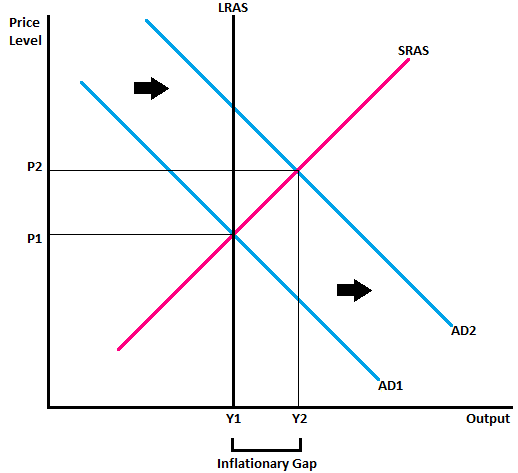1. Suppose we observe that US economy is experiencing low unemployment (3%), faster-than-average real GDP growth (4%), and increasing inflation (rising from 2% to 4%). a. Draw the AS/AD graph for the kind of shock that would generate these symptoms, and give an example of how that kind of shock might happen. What kind of change in the economy leads to this kind of AS/AD graph? b. Briefly discuss what you see in the graph that corresponds to each of the symptoms. E.g. what part of the picturetells you we have low unemployment?
1. Suppose we observe that US economy is experiencing low
a. Draw the AS/AD graph for the kind of shock that would generate these symptoms, and give an example of how that kind of shock might happen. What kind of change in the economy leads to this kind of AS/AD graph? b. Briefly discuss what you see in the graph that corresponds to each of the symptoms. E.g. what part of the picturetells you we have low unemployment?
b)Describe the two goals that the Federal Reserve is required to pursue with
Be sure to explain how the proposed action helps achieve the Fed's goals.
An inflationary gap is said to exist in the economy when its actual gross domestic product exceeds the full-employment level of output. It is an ex-ante phenomenon that occurs when planned expenditures in the economy overwhelm its potential output at base prices, indicating an increase in the inflation rate in the future.

An inflationary gap in the economy is an outcome of a positive demand shock. An increase in aggregate demand causes the aggregate demand curve to shift to the right. If the economy already operated on its long-run equilibrium, i.e. at the intersection of its aggregate demand curve, short-run aggregate supply curve, and the long-run aggregate supply curve, the rightward shift in the demand curve will push the actual output beyond the economy's optimum capacity. As demand overwhelms supply, there will be an increase in the price level.
A positive demand shock can be caused due to an increase in government spending or a reduction in the tax rate, both expansionary fiscal measures, or due to an enthusiastic increase in consumer confidence regarding the state of the economy that prompts them to increase their current volume of consumption.
A positive demand shock has the potential to cause a severe inflationary gap in the economy that warrants contractionary measures to prevent the economy from overheating.
Step by step
Solved in 4 steps with 1 images









